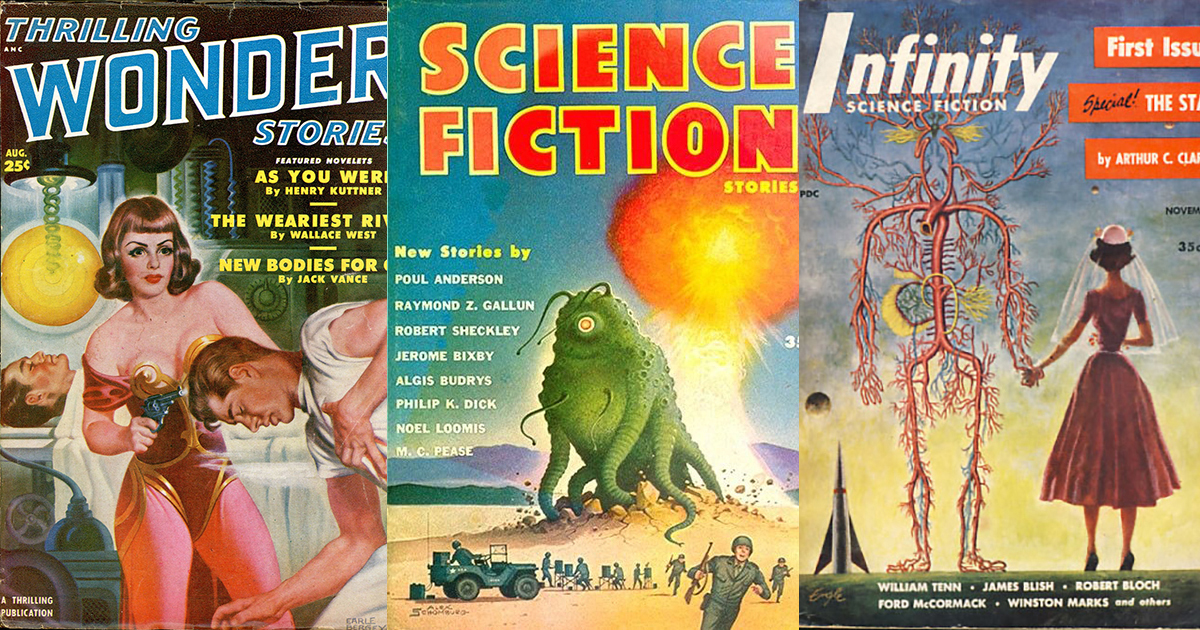Gunn updates his illustrated history of the future

LAWRENCE – At age 95, author and scholar James Gunn shows no sign of slowing down.
The new edition of his 1975 coffee-table book, “Alternate Worlds: The Illustrated History of Science Fiction,” just out from McFarland & Co., is his fourth book in the past two years.
In 2017, his novel “Transformation” (Tor Books, 2017) completed a trilogy that began with “Transcendental” in 2013.
That same year, his autobiography, “Star-Begotten: A Life Lived in Science Fiction” (McFarland), recounted a career stretching back to the form’s so-called Golden Age.
And this year, McFarland also published a paperback version of Gunn’s 1951 master’s degree thesis, titled “Modern Science Fiction: A Critical Analysis,” with an introduction by Gary Wolfe.
At the present time, Gunn says, he is four chapters into a new novel inspired by chats with colleagues about “artificial intelligence and its capacity to change the world,” plus a couple of essays. And he has contracts in hand for a couple of other books.
For the 2018 softcover edition of “Alternate Worlds,” whose original preface was penned by one of the Golden Age “Big Three,” Isaac Asimov, (see video below) Gunn wrote new first and last chapters, reviewing changes in the world and the world of sci-fi the past 40 years.
While such formerly sci-fi concepts as space travel and atomic energy were realities when the first edition of “Alternate Worlds” came out, two-way wrist radios were not, nor was the world-shrinking and publishing-industry-shaking internet. Gunn reviews these changes and more in a new final chapter titled “The Shape of Things That Came: 1975-2016.”
Gunn says “Alternate Worlds” grew out of the work he did when he first began teaching science fiction at KU in 1970. He proposed a book, based on his initial lecture notes, on how to teach science fiction. The publisher, Prentice-Hall, came back with the idea for the lavishly illustrated pop history that became “Alternate Worlds.”
In those days before the internet, covers and illustrations from the great old pulp magazines like Astounding Science Fiction and Thrilling Wonder Stories were not readily available in other forms. And while the colorful rocket ships, monstrous aliens and damsels in distress retain their power to draw the eye, Gunn makes sure to give his writing peers their due in the accompanying text. To the Golden and Silver Age figures Gunn mentioned in 1975, the new edition adds such late 20th- and early-21st-century names as William Gibson, Orson Scott Card and Gene Wolfe.
Gunn said some of his predictions from 1975 came true, and some did not.
“I did make some predictions about what I thought science fiction was going to be,” Gunn said. “I said I saw that science fiction was going to be more like the mainstream as time went by, and a lot more science fiction concepts would be taken up by the mainstream, and that’s happened; and that they would sort of grow together, so that in the middle it would be difficult to know whether they were science fiction or mainstream, and that’s happened. A lot of mainstream authors have turned to writing science fiction – ‘The Handmaid’s Tale’ and others – while a lot of science fiction writers have turned to writing mainstream books or turned their science fiction ideas into mainstream.”
On the other hand, Gunn said, “I didn’t anticipate the way it has been expanded in television and fandom of these kinds. I never thought there would be something like the Comic-Con in San Diego, where about 100,000 fans show up, or that there would be so much about science fiction in films and TV and comic books, illustrated novels and all of this. It was hard to anticipate exactly. Nevertheless, I think there ought to be something unexpected.”